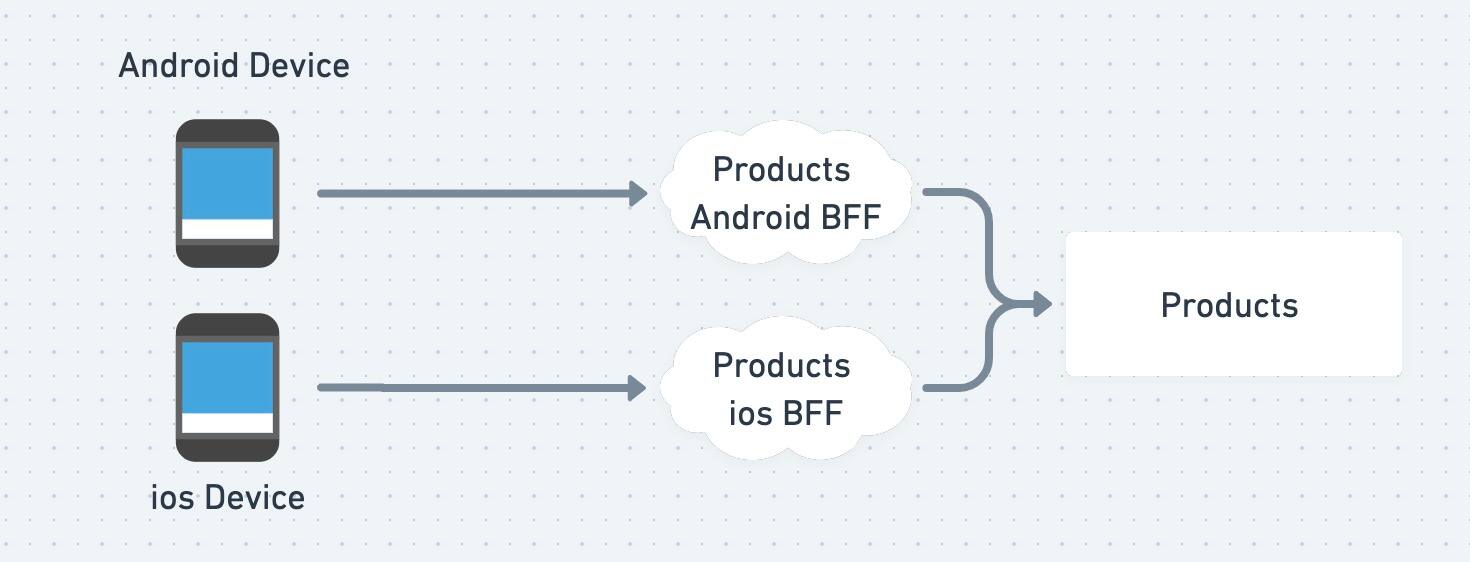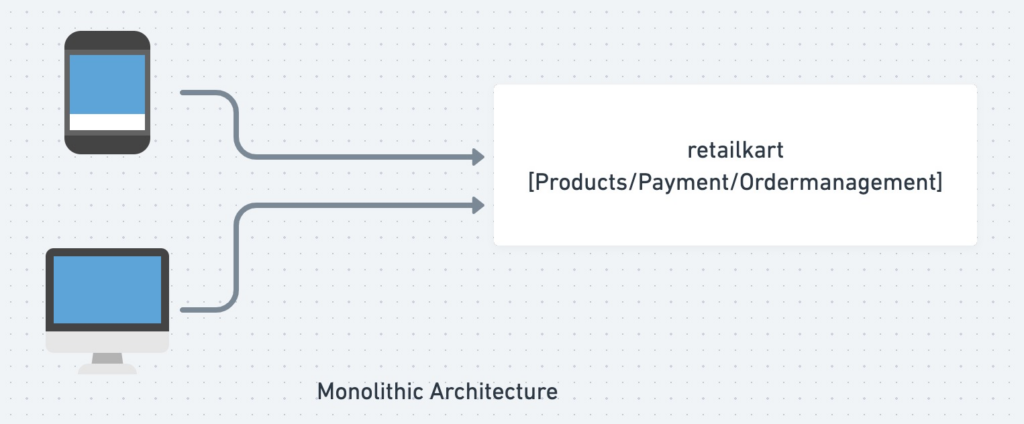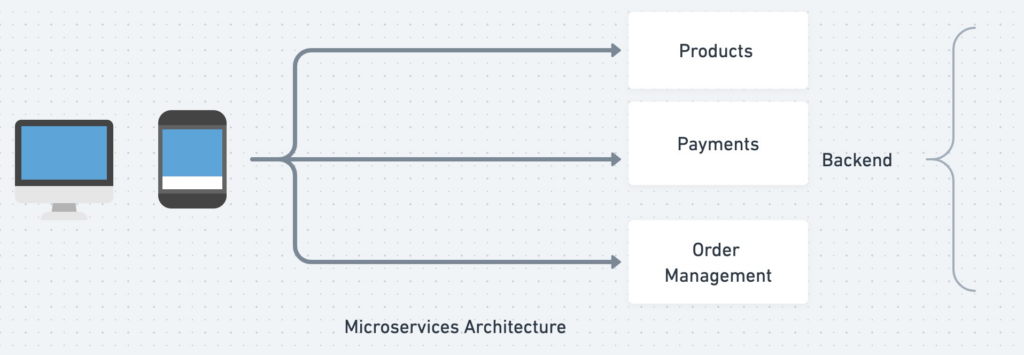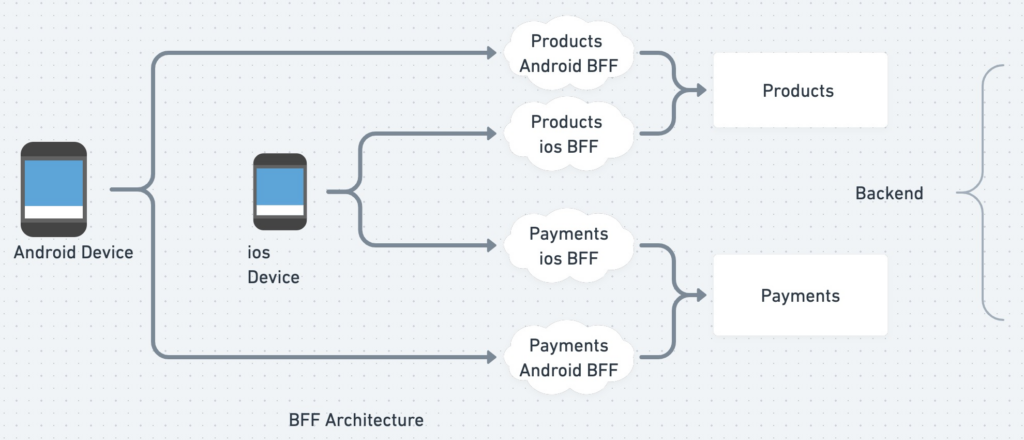
In today’s digital landscape, delivering a seamless and personalized user experience across multiple platforms with scale is crucial for success across various industries, such as OTT (Over-the-Top) streaming, e-commerce, fintech, and more. However, traditional monolithic and microservices architectures at the backend present their unique challenges, ranging from performance bottlenecks to intricate service interactions. Enter the BFF (Backend for Frontend) architectural pattern, a transformative solution that bridges the gap between these architectures. In this blog post, we will delve into the limitations of monolith and microservices, introduce the BFF pattern, and explore how it can revolutionize the user experience in a sample e-commerce application accessible via Android, iOS, and web devices.
1. The Monolith and Microservices Challenge:
Monolithic Architecture: Monolithic architectures are characterized by a single codebase that handles all aspects of an application. While they are easy to develop initially, they become challenging to scale and maintain as the application grows. Any changes to the monolith can impact the entire system, leading to slow deployment cycles and difficulty in adopting new technologies.

Microservices Architecture: Microservices break down an application into small, loosely-coupled services, each handling a specific function. While this allows for scalability and independent development, it introduces complexities in service-to-service communication, data consistency, and operational overhead like under-fetching or over-fetching data .

2. Introducing BFF (Backend for Frontend): BFF architectural pattern acts as an intermediary layer between the client (e.g., Android, iOS, web) and the backend services. Each client type has its dedicated BFF, allowing developers to optimize and customize the data and functionality presented to the client. This empowers front-end developers to control the user experience without relying on backend changes, enhancing agility and reducing dependency.
3. BFF Benefits: Simplified Frontend Development: BFF allows front-end developers to access tailored APIs specific to each client, simplifying the client-side codebase. This customization promotes faster development and better UI/UX consistency across different platforms.
Performance Optimization: With BFF, data retrieval and processing are optimized for each client type. The BFF can consolidate data from multiple backend services into a single API call, reducing chattiness and improving response times.
Enhanced Security: BFF acts as a gatekeeper, shielding sensitive backend services from direct client access. This enables better control over access privileges and prevents unnecessary data exposure, bolstering security.

In the above-restructured architecture of retailkart e-commerce platform, we can see that there is a BFF layer for Products and Payment specific for Android and ios. By embracing the above architecture pattern following benefits can be observed.
- BFF eliminates data over-fetching and under-fetching by providing precisely the required data for each platform. This results in leaner payloads and efficient data consumption.
- BFF optimizes performance by consolidating data retrieval and processing into specialized APIs for each platform. This reduces chattiness and minimizes response times, resulting in faster, more responsive applications.
- Clients will become much leaner by not doing the complex task of parsing and filtering the bulky data sent by the backends.
- With BFF, front-end developers can work independently, customizing APIs for each client platform. This decoupling between front-end and back-end development allows for faster development cycles and quicker deployments, enhancing overall development speed.
- BFF enables vertical scaling, allowing specific backend services to scale independently based on the demands of each client platform
In the dynamic world of multi-platform e-commerce, the BFF architectural pattern proves indispensable. It deftly addresses the challenges of a single backend service by providing dedicated, optimized APIs for each platform. It fosters faster development cycles, improved scalability, enhanced security, and a more tailored user experience. With BFF, businesses can build agile and responsive applications that cater to the unique requirements of each client platform, leading to higher user satisfaction and better operational efficiency.